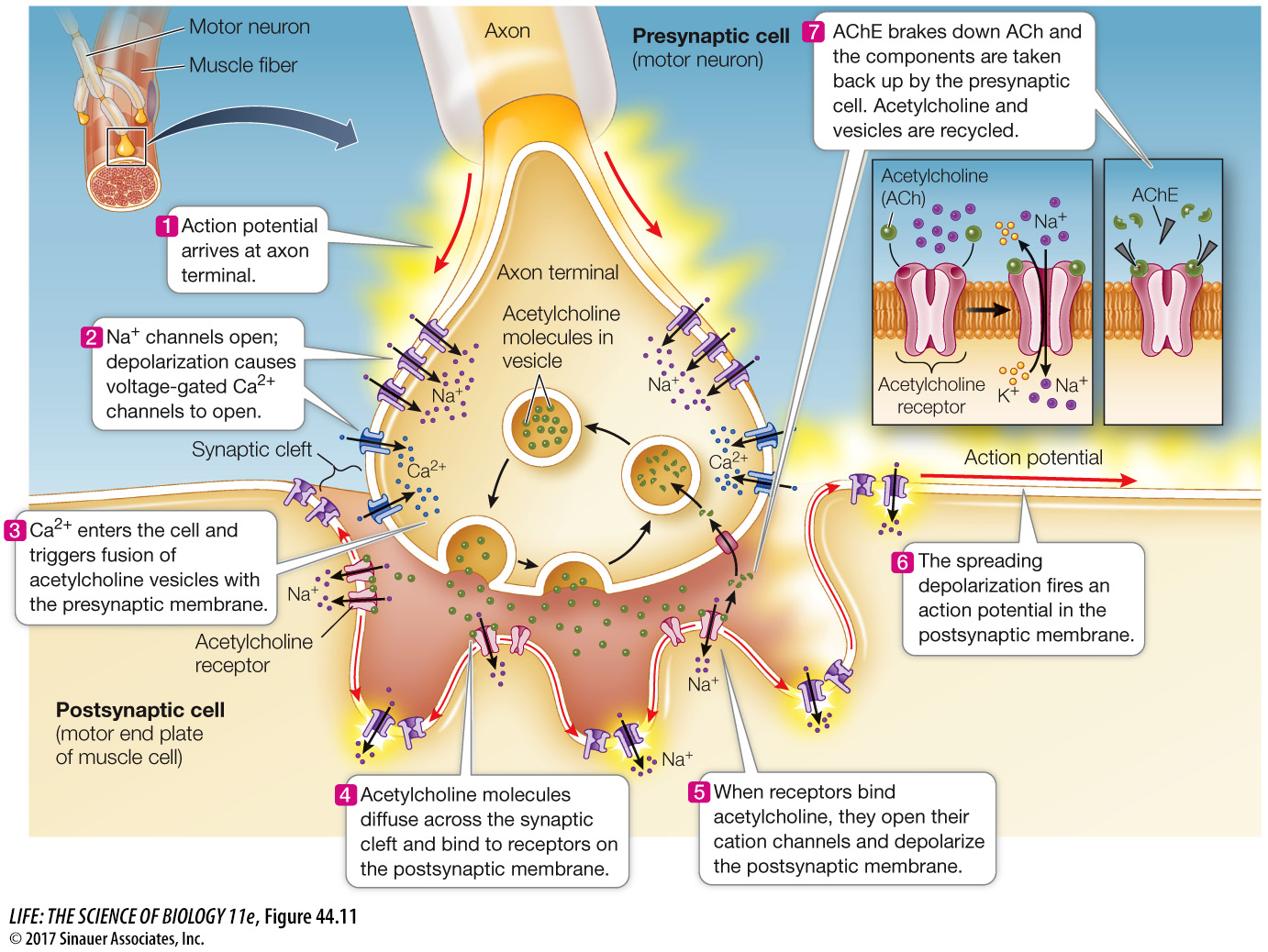The neuromuscular junction is a model chemical synapse
Neuromuscular junctions are synapses between neurons and skeletal muscle cells. They are excellent models for how chemical synaptic transmission works. Neurons that control muscles are called motor neurons. Like other neurons, a motor neuron has only one axon, but that axon can branch into numerous axon terminals that form many synapses with muscle cells. At each axon terminal an enlarged knob or buttonlike structure contains membrane-
The postsynaptic membrane of the neuromuscular junction is a modified part of the muscle cell membrane called a motor end plate. It appears as a depression in the muscle cell membrane, and the terminals of the motor neuron sit in the depression. The space between the presynaptic membrane and the postsynaptic membrane is the synaptic cleft, which in chemical synapses is about 20–
focus: key figure

Question
Q: If this synapse were between neurons, and the neurotransmitter were inhibitory rather than excitatory, what chemically gated channels would you expect to be on the postsynaptic membrane?
You would expect either Cl– channels or K+ channels to be on the postsynaptic membrane.
Media Clip 44.1 Put Some ACh Into It!
www.life11e.com/
Animation 44.3 Synaptic Transmission
www.life11e.com/